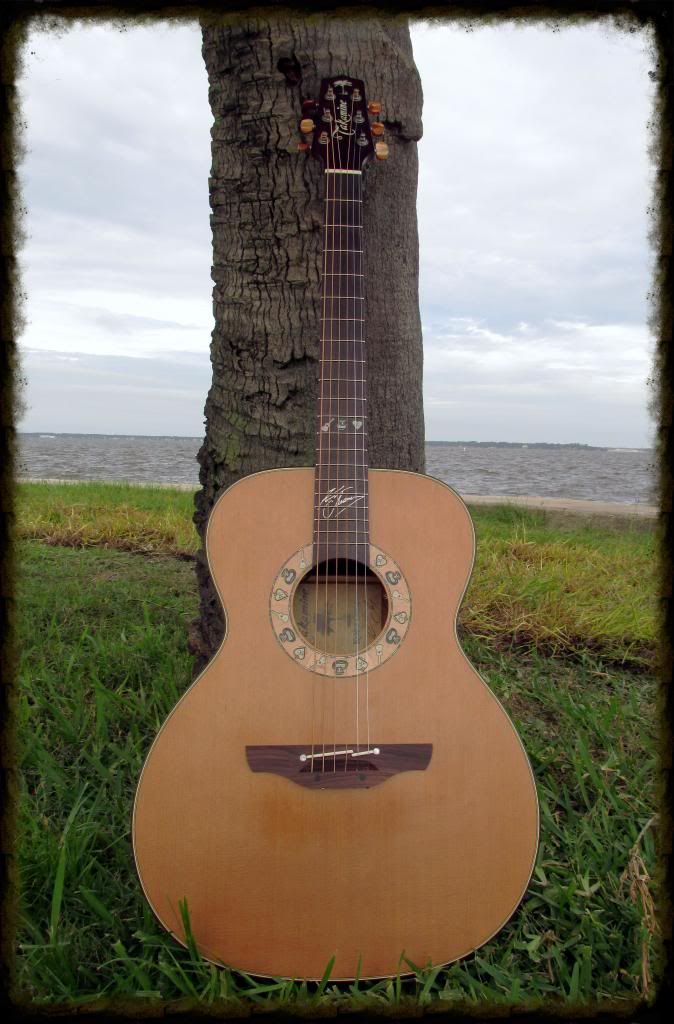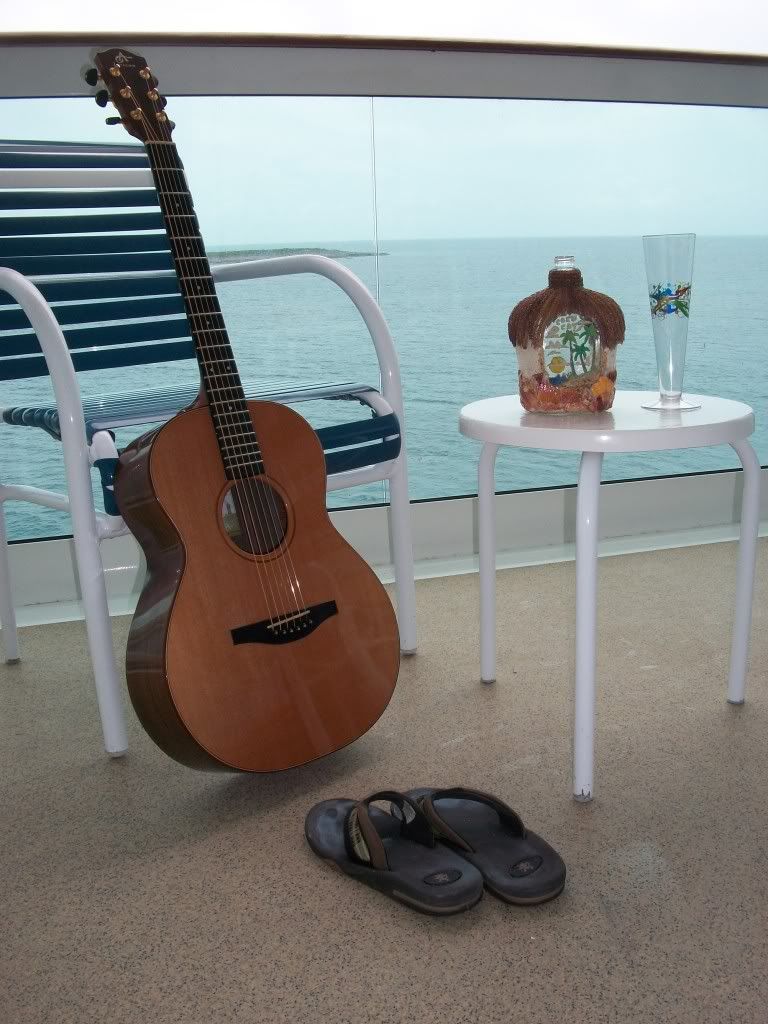
 |
|
#16
|
||||
|
||||
|
Hi 6L6...
Actually, your guitar (my guitar) is basically a DEAD tree. Depending on the intended use, what is good for a live tree may not apply to dead ones. We burned wood as our primary heat source for 20 years, and high humidity in dead wood is not a good thing for wood you are burning for heat. in fact it can cause fungus and rot. That said, 60% humidity will not injure wooden instruments nor solid wood furniture. Low humidity may destroy or injure either. |
|
#17
|
|||
|
|||
|
Quote:
He told me that his mean humidity summer and winter was 25%. He kept his guitars in wood & glass display cases with a gallon tank of water under each - tanks that he refilled every few days ! I don't think that 60% is going to cause long term damage. |
|
#18
|
|||
|
|||
|
what a great thread this turned out to be. I am absolutely no longer concerned with my new guitar in constant 60% humidity, but I am intrigued by the comparison of wooden musical instruments to trees and firewood. Hahaha. AGF is the greatest! Thanks all.
|
|
#19
|
|||
|
|||
|
Quote:
6L6 Enough people have already refuted your "Guitar is a Tree" idea, so I don't need to pile on - but I will anyway.  It's dead wood, cut thinly, with string tension. It's dead wood, cut thinly, with string tension.OP 60% is fine, and you can use ljguitar's excellent suggestion to have saddles to swap out to adjust action. Me, I give a little crank to the truss rod if action goes askew. |
|
#20
|
|||
|
|||
|
It's interesting that antique furniture, ie, older than even 200 years, did fine no matter the humidity. According to some experts, this is because houses of the past had slower changes in humidity. Gradual changes with the seasons (yes, there would be periods of high fluctuations) and homes w/o forced (dry) air heat helped wooden things last.
Constant humidity in a "normal" range won't hurt anything. It's those dang blasted 80% summer days and 12% winter ones that wreak havoc.
__________________
sawdustdave Larrivee Forum I OM-03 #3 of 17 Martin JC16WE Recording King ROS-06 Recording King RK-R20 Banjo Home Built Mountain Banjo |
|
#21
|
|||
|
|||
|
Quote:
|
|
#22
|
|||
|
|||
|
Quote:
perhaps the biggest difference is in allowing seasonal wood movement. The design of guitars doesn't allow for it. Well designed/crafted furniture does. Guitars have thin, wide pieces of wood that are restrained all around their edges from expansion and contraction. It can only move so much within its constrained edges before the inner stresses exceed its strength and the wood splits. By contrast, a well-constructed table top, for example, is attached to its base in such a way as to allow it to expand and contract, preventing it from splitting. A poorly constructed table top - one which does not allow for seasonal movement - is destined for the firewood pile. |
|
#23
|
|||
|
|||
|
I find 60% is fine, but when the humidity shoots up above 70%, I know it's a good time to fire up the A/C. In the winter, when the RH begins to drop below 45%, I just use a spray bottle of plain water in the rooms where I keep my guitars, and I can keep them happy.
 TALKGTR, I am so grateful to you for posting those pictures...I think I can now see the difference. But what about firewood and a First Act guitar? You'll have to explain that to me, and talk slowly, as I find it extremely difficult to see any difference.  Glen
__________________
Yamaha FG-375S Jumbo Martin DXME/D-35E/DC Aura/000-14 Custom/D-16E Custom/ 000C Nylon/0000-28HE/Concept IV Jumbo/00-16C/D-4132SE Gibson LP Deluxe/ES-347 TD/Chet Atkins CE Fender MIA Deluxe Strat Art & Lutherie 12-string Bellucci Concert Sigma CR-7 Recording King ROS-06 FE3/RPH-05 D'Angelico "New Yorker" New Masters "Esperance SP" Hermosa AH-20 “I never met a guitar I didn't like.” 
|
|
#24
|
||||
|
||||
|
Hey earri;
I grew up in S. Fl then and now in N. Fl always around water and the coast...60% in not unusual for these parts especially when we play outside or leave windows open which I do both with guitars out on stands > NO PROBLEM buddy. I have had it even a bit higher at a constant 65% or so too. I find when windows closed in the summer with heavy ac on it comes down into the 40-50 range. I only encountered one small swelling in my Avalon at 100% humidity playing extensively outside on a cruise ship and even then it was a slight buzz that resolved itself after re-acclimation indoors with ac bringing it down to 40-60 range. I was the house band on another cruise ship for about a year playing outside on top deck for hours guitars out in on stands both electric and acoustic > no problems save the occasional tuning. So enjoy your guitar in the tropics and just use common sense in avoiding sudden extremes and/or over exposure. There ain't nuthin' like kickin' it and pickin' it under a palm tree and blue sky!    
__________________
 NOLE TUNES & Coastal Acoustic Music one love jam! NOLE TUNES & Coastal Acoustic Music one love jam!  Martin D18 & 3 lil' birdz; Takamine KC70, P3NC x 2 
Last edited by noledog; 09-24-2013 at 04:05 PM. |
|
#25
|
|||
|
|||
|
[QUOTE=Opa John;3633662]
Low humidity, lower than about 35% would be a bigger concern to me than high humidity. Amen to that! With heaters, air conditioning, etc............those necks and frets get testy! |
|
#26
|
||||
|
||||
|
BTW,
You need to consider the temperature (as well as elevation/barometric pressure). 60% RH changes in terms of water vapor concentration with temperature. 7.7 g/m3 = 15 degrees C (59 F) @60% RH 10.4g/m3 = 20degrees C (68 F) @60% RH 13.8g/m3 = 25 degrees C (77 F) @ 60% RH 18.2g/m3 = 30 degrees C (86 F) @60% RH As the air temperature rises, so does the water vapor concentration. So air in the low 80s F holds ~2x the water vapor as air in the low 60s F. A typical safe range is between 6.9g/cm3 to 13.8g/cm3 water vapor concentration covers 20-25 degrees C 40-60% RH.
__________________
A bunch of nice archtops, flattops, a gypsy & nylon strings… |
|
#27
|
|||
|
|||
|
Quote:
Your guitars look like happy traveling companions |
|
#28
|
|||
|
|||
|
Quote:
Quote:
|
|
#29
|
||||
|
||||
|
Quote:
We'll just have to disagree on this one. The equalibrium moisture content (EMC) of the bound and free water in wood is based upon both the molar water concentration and temperature of the surrounding environment when the EMC is below the fiber saturation point. This is basic to mass transfer and sorption. The Hailwood-Horrobin equation is typically used to approximate the relationships between temperature, relative humidity, and the equilibrium moisture content. Respectfully, Bob
__________________
A bunch of nice archtops, flattops, a gypsy & nylon strings… |
|
#30
|
|||
|
|||
|
Quote:
|